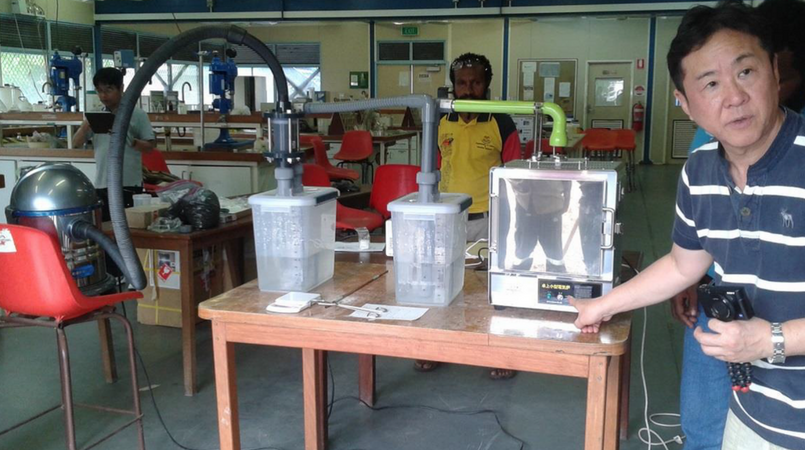
A Japanese invented alluvial mining technique has been sanctioned by the Mineral Resources Authority (MRA) as an appropriate technology to avoid poisoning of artisanal and small scale gold farmers.
This follows a recent mercury research study in Wau, Morobe Province, conducted by the MRA, PNG University of Technology and the University of Kyoto.
The study was conducted on the Japanese Mercury Recovery Kit, a prototype amalgam retorting machine for the recovery of mercury and to critically assess its overall performance, efficiency and ease of operation.
The MRA said in a statement that it is an appropriate technology and should be promoted and used in PNG’s artisanal and small scale gold mining industry for mercury and recycling recovery.
MRA Managing Director, Philip Samar, is credited for being instrumental in introducing the technology.
He said the primary purpose of this collaboration was to reduce and mitigate the increased use and disposal of mercury into the environment as well as increase alluvial gold production, resulting in the health of both the environment and people plus improving the wellbeing of ordinary PNG alluvial miners.
The use of mercury has become very popular among artisanal and small scale miners for amalgamation, which is known to efficiently extract fine particles of gold from concentrates.
It is also the most dangerous practice due to the toxicity of mercury vapour, which can also be inhaled by miners.
Mercury poisoning is responsible for clinical symptoms which include speech impediments, failure of muscular coordination, contraction of visual fields in the eye, disturbance in smooth eyeball movements, enteral hearing loss and unbalance of body.
The disease is now commonly known as the “Minamata Disease”.
The MRA says the promotion and use of the Amalga Retorting Machine would be very beneficial in the long term as they are capable of reducing discharge of mercury vapour into the atmosphere and the environment.
It can also recover bulk of the mercury for recycling, which would be a potential economic gain for the small scale miners and the chances of them being poisoned can be minimised through the establishment of central facilities in alluvial mining active areas which will alleviate the more dangerous practice of “cooking” amalgams.
